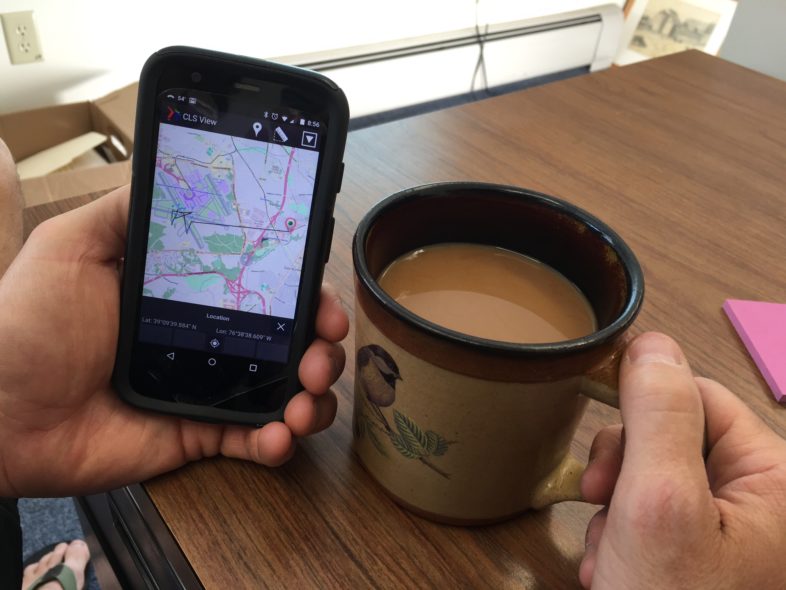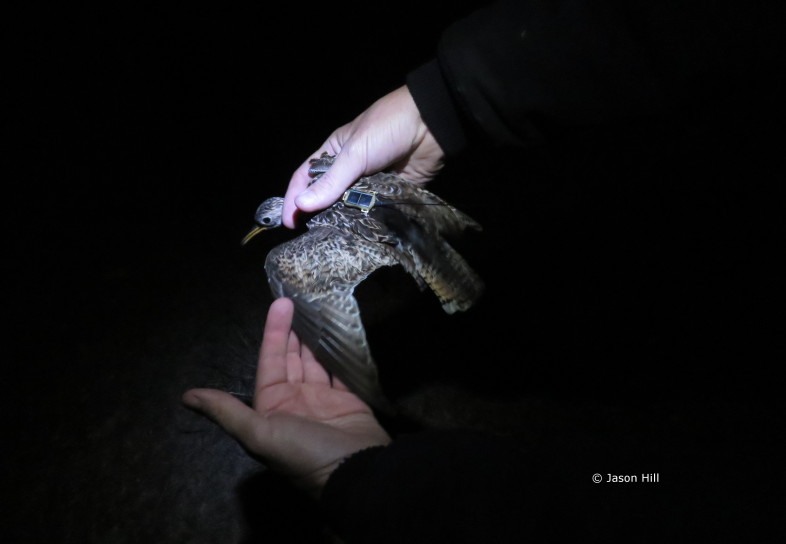
VCE biologist Jason Hill checks in on a satellite-tagged Upland Sandpiper that has spent the last week in between the runways at Baltimore Washington International Airport. These satellite tags send the birds’ location data directly to us via the internet.
Even we have to admit that tracking satellite-tagged Upland Sandpipers (Bartramia longicauda), from our smartphones, while we sip coffee, is pretty incredible…and downright easy. As part of VCE’s grassland bird migration project we have almost four dozen satellite tags currently deployed onto Upland Sandpipers and Eastern Meadowlarks (Sturnella magna) across the U.S. A handful of these birds are wearing solar-powered tags that send us the birds’ location data (including speed and altitude) every day, and we can even view the data in Google Earth. Consistent with VCE’s open data policy, we are also archiving the data at Movebank.org so that other researchers and the public can view and analyze our data as well. These tags will shed light on the year-round movements of Upland Sandpipers and Eastern Meadowlarks, and help us to understand how separate breeding populations of these species are connected on the wintering grounds.
“So what’s the hard part,” you’re now asking yourself. Catching the birds! Despite the substantial population declines of Upland Sandpipers and Eastern Meadowlarks across North America, relatively few ornithologists work with these species…and we think we know why. I have captured thousands of birds, and that includes over one thousand grassland sparrows. But some nights we didn’t capture (or see) any Upland Sandpipers, and it took me nearly four days of sunrise-to-sunset efforts to capture my first Eastern Meadowlark. The Midwest Field Crew Leader Clay Graham and I even tried lifelike papier-mâché decoys, before we stumbled on a strategy that consistently captured meadowlarks.
Ironically the hard part is over for us, but it is just beginning for the birds. Migration is a successful, albeit risky, strategy, and Upland Sandpipers migrate thousands of kilometers to South America while facing severe weather and anthropogenic hazards. In fact, one of our satellite-tagged birds has been spending the last week on the grassy areas between runways at Baltimore-Washington International Airport! Stay tuned as we learn more about the trials and tribulations of these birds as they migrate southward.

Jason Hill, Brett Sandercock (Kansas State University), and Clay Graham prepare to relase an Upland Sandpiper wearing a solar-powered GPS tag at Konza Prairie, Kansas. © Jason Hill
